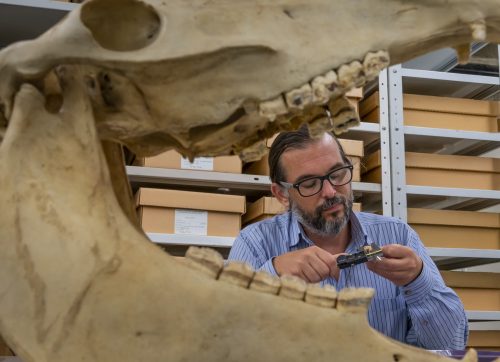
In a recent paper published in PLOS ONE, researchers of the Florida Museum, including EAP alumnus Nicolas Delsol and EAP curator Kitty Emery, shed light on the history of domestic horses in the Americas through the analysis of the oldest domestic horse mitogenome sequenced so far. The specimen comes from the early Spanish town of Puerto Real, a European settlement founded in 1503 on the northern coast of the island of Hispaniola.
This study supports the hypothesis that domestic horses in Spanish America were originally brought from the Iberian Peninsula. This finding also suggests that the closest modern relatives of this colonial horse are a population of feral horses found on the islands of Chincoteague and Asseateague (Virginia). This finding resonates with local folk stories saying that these horses descend from animals that escaped the shipwreck of a Spanish galleon. Beyond local legends, these results highlight underreported episodes of the European colonization of the Americas, such as the Spanish exploration of the mid-Atlantic region since the 16th century.
These results have also drawn considerable national media coverage, including a featured paper in the National Geographic. Here are some links to these stories: